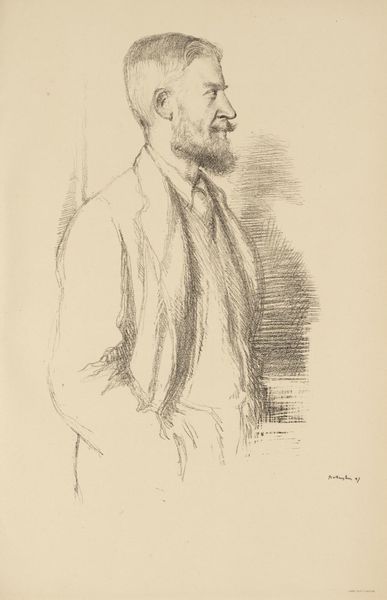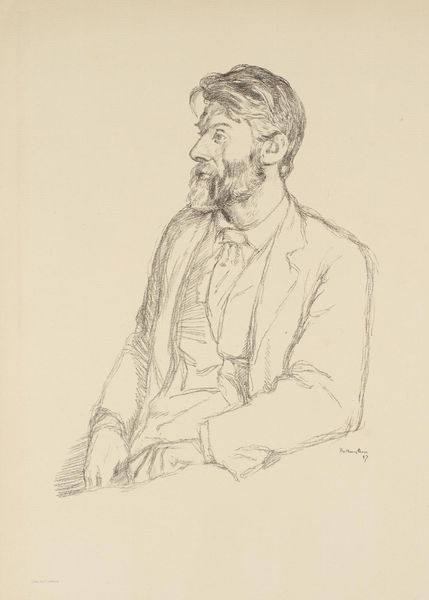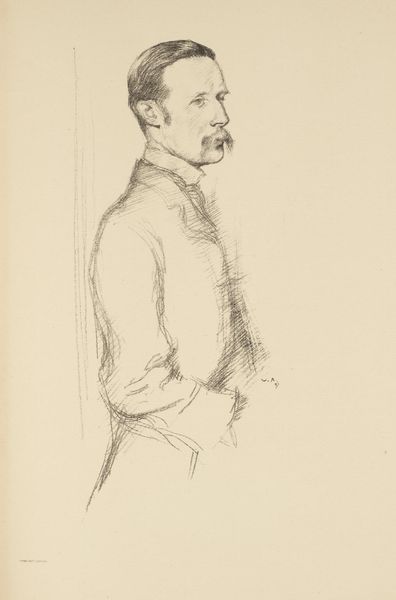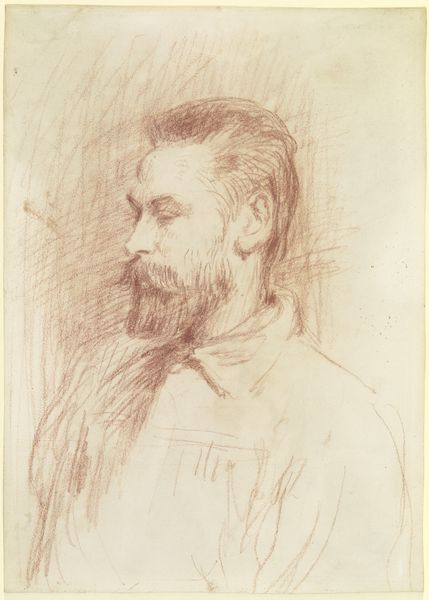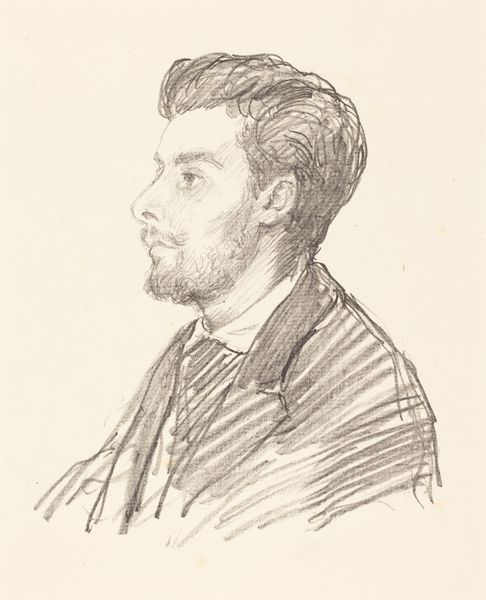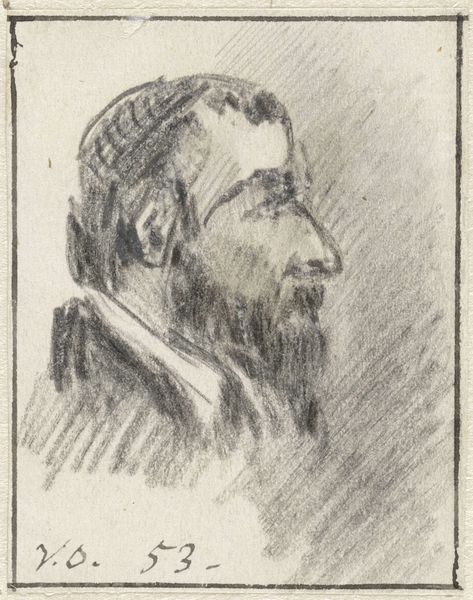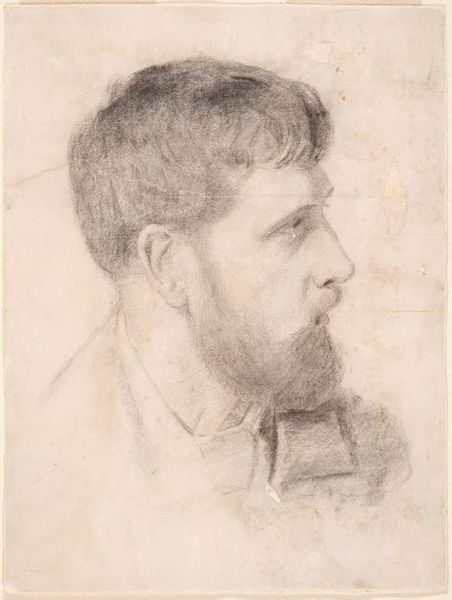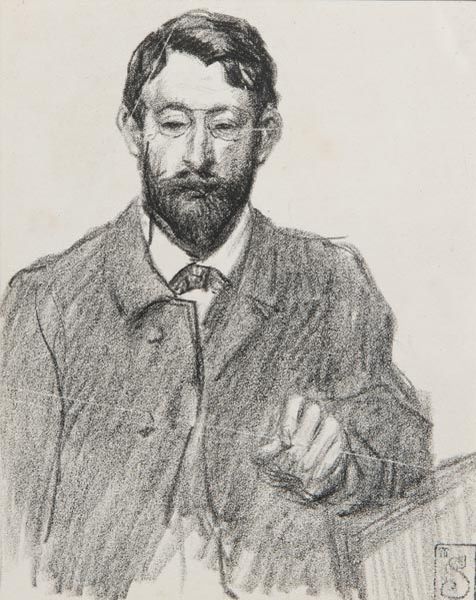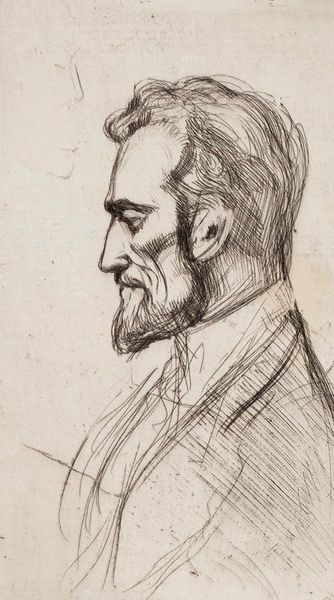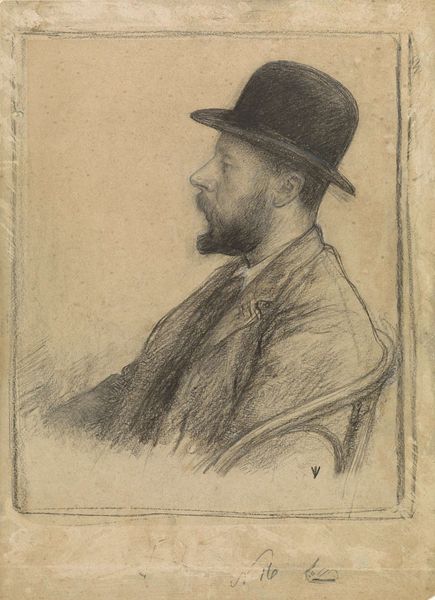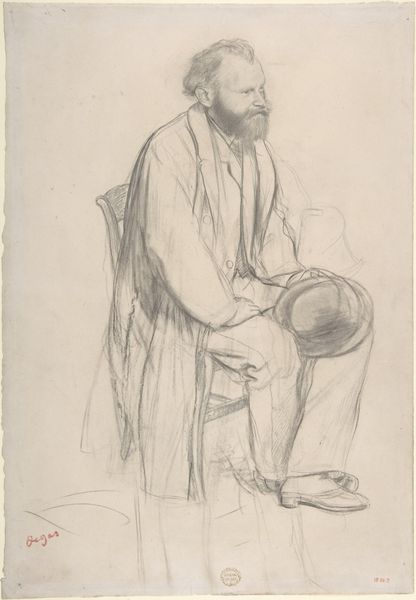
drawing, pencil
#
portrait
#
drawing
#
pencil drawing
#
pencil
#
portrait drawing
#
academic-art
#
realism
Copyright: Public Domain: Artvee
Editor: We are looking at "Portrait of Alfred Parsons, R.A.," a pencil drawing from 1886 by Edwin Austin Abbey. It strikes me as very detailed and capturing the subject's introspective mood through line work alone. What do you see in this piece, from your perspective? Curator: I am drawn to the dynamism achieved through the cross-hatching and varied line weights. Observe how Abbey employs a dense network of lines to sculpt the forms of Parsons's face and beard, achieving a palpable sense of volume. The varying pressure of the pencil creates areas of deep shadow and bright highlight, activating the surface. Editor: It almost looks unfinished around the shoulders. Was that a common technique, or more of a sketch style for the artist? Curator: Note the economy of means. The unfinished quality invites us to contemplate the process of creation itself. It highlights the structural elements of portraiture – how line and form alone can suggest presence. This could be seen as a conscious decision to foreground the artistic process, rather than create a purely representational likeness. Do you see how the energy of the strokes directs the eye? Editor: I do! The direction of the strokes really emphasizes the contours, creating a sense of depth where you expect it, and letting the background fade away. Curator: Exactly. It exemplifies the academic approach to drawing, skillfully manipulating light and shadow with minimalist line work, and celebrating the essence of form over faithful replication. It reveals how abstraction and representation exist on a spectrum. Editor: I see what you mean; thank you for helping me to look beyond the surface and appreciate its structure! Curator: A rewarding observation, and my pleasure. It demonstrates that even seemingly simple portraits have a depth to unravel.
Comments
No comments
Be the first to comment and join the conversation on the ultimate creative platform.
